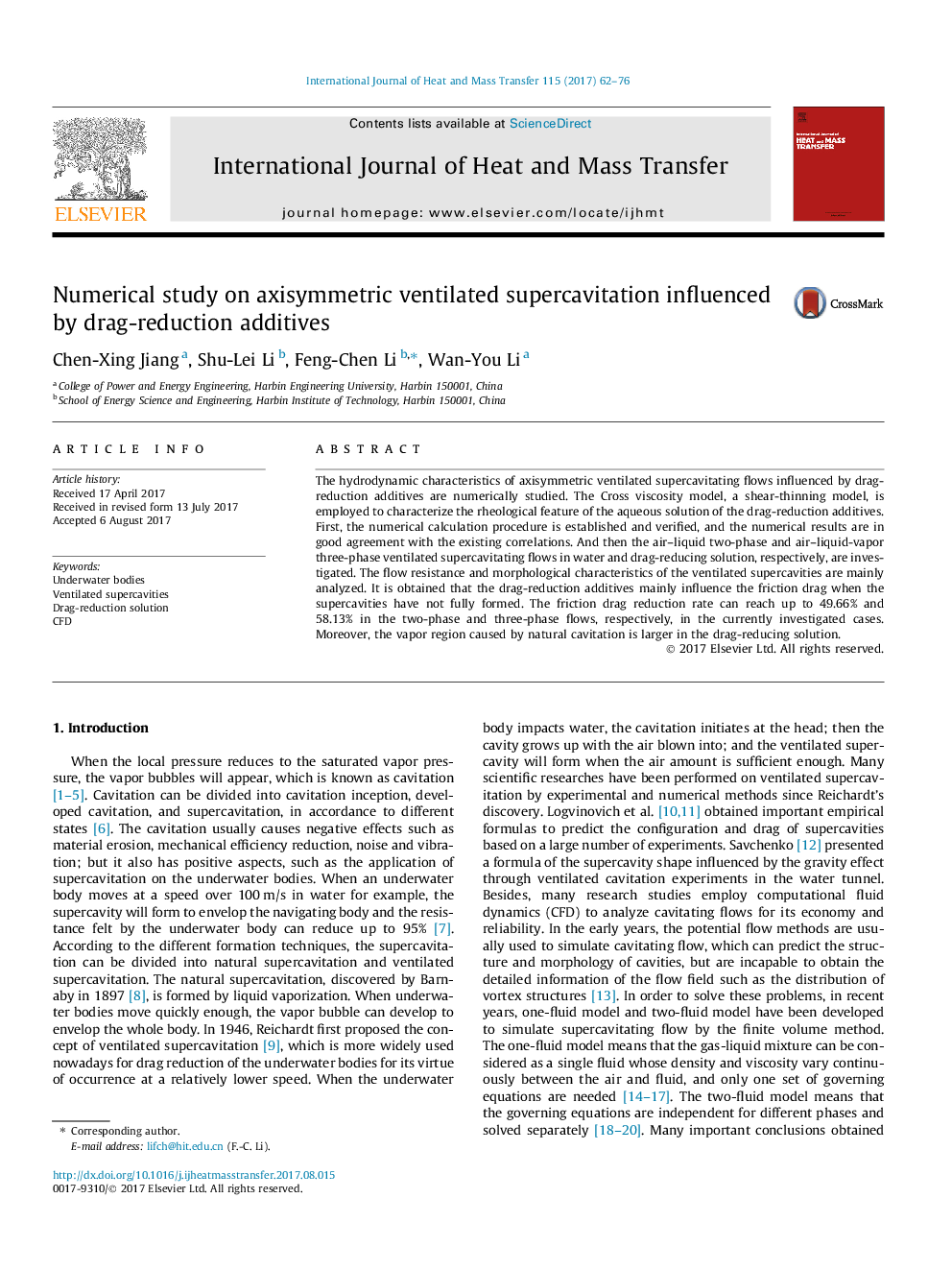| Article ID | Journal | Published Year | Pages | File Type |
|---|---|---|---|---|
| 4993954 | International Journal of Heat and Mass Transfer | 2017 | 15 Pages |
Abstract
The hydrodynamic characteristics of axisymmetric ventilated supercavitating flows influenced by drag-reduction additives are numerically studied. The Cross viscosity model, a shear-thinning model, is employed to characterize the rheological feature of the aqueous solution of the drag-reduction additives. First, the numerical calculation procedure is established and verified, and the numerical results are in good agreement with the existing correlations. And then the air-liquid two-phase and air-liquid-vapor three-phase ventilated supercavitating flows in water and drag-reducing solution, respectively, are investigated. The flow resistance and morphological characteristics of the ventilated supercavities are mainly analyzed. It is obtained that the drag-reduction additives mainly influence the friction drag when the supercavities have not fully formed. The friction drag reduction rate can reach up to 49.66% and 58.13% in the two-phase and three-phase flows, respectively, in the currently investigated cases. Moreover, the vapor region caused by natural cavitation is larger in the drag-reducing solution.
Keywords
Related Topics
Physical Sciences and Engineering
Chemical Engineering
Fluid Flow and Transfer Processes
Authors
Chen-Xing Jiang, Shu-Lei Li, Feng-Chen Li, Wan-You Li,
